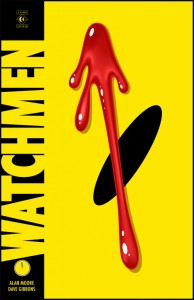
Cards on the table, I’m in the process of migrating over to being more of a tpb reader. A string of work projects caused me to get behind on my reading (kids… think twice about running back-to-back Kickstarters with no break in between) and once you get 6 months behind, you’re functionally either reading tpb-sized runs of single issues or getting something with a spine.
From my perspective, part of it is Heidi MacDonald’s theory of the “Satisfying Chunk.” There are too many comics where you don’t get much actual _story_ in a single issue and it can be even worse with first issues. Sometimes it just reads better in larger chunks and the price can even out a bit. Besides, there’s something to be said for having the whole story in your hands. The other major part is there are too many comics that cost $3.99 and can be read in 5 minutes or less. The cost of an hour’s reading is something in the neighborhood of $48 and those issues tend to be lighter in story, too.
With that in mind there are a few things that creators and publishers really ought to be revisiting when moving from serialized installments to collected editions. Let’s get the Big Two publisher things out of the way first. The Big Two, after all, are vocally derisive of advice coming from “the Internet” and have a set of issues (pun intended) that the worlds of independent comics and webcomics really don’t.
Release Cycle
Over last weekend, DC announced the creative lineups for most of their June relaunch. If you prefer book collections, this is a bit frustrating. Why? Because they’ve cancelled most of the last cycle before the book collections have had a chance to sell through. A couple weeks ago I picked up Prez, possibly the best comic DC has released in the New 52 era. At least that one will be back for another run. Over C2E2 I picked up Martian Manhunter, which I enjoyed enough to likely pick up the second, final volume. Doctor Fate is sitting on my nightstand. I believe Omega Men is due in the Fall. Pragmatically, DC is likely delaying the book releases to nudge readers towards the serialization. Unfortunately, what they’re really telling readers is that their patronage only matters if they’re buying the monthlies. Not exactly the message you want to be sending the segment of the market that’s growing. “We already cancelled these, but here’s your books.” The guilt trip that trade-waiters get books cancelled no longer flies. It’s a valid format or you wouldn’t be seeing original graphic novels coming out from the Big Two.
You see things like Squirrel Girl outperforming with their print sales over at Marvel. DC could have that happen, too… except it’s less likely to gain momentum if the titles are already cancelled. You really want to get that first volume out for a couple months before there’s any cancellation to see what you’re dealing with. Retailers used to tell me, back before Vertigo got caught up in company politics, that once a Vertigo book had three tpbs out and it hadn’t been cancelled, THEN they would start to see a sales uptick. Forget about that cycle in the current environment.
The Artist Carousel
All this business about bi-weekly titles or 18 issues/year titles (i.e. bi-weekly every other month) means you don’t always have the same artist for an entire story. It’s dicey enough switching out artists for the single issues, but when you put it all together in a book and it switches ever couple of chapters, that doesn’t always work out so well. Some titles and editors handle it better than others, but one suspects the amount of lead time and understanding the realistic speed of a given artist are the keys here.
Crossover-itis
I get that crossing over with the big event helps monthly sales, but does it really help the book sales? If you’re thinking of the book as having a longer shelf life than the month they come out, when volume 3 of a series is a crossover with the event of the month, that doesn’t always make for good standalone reading. Is the potential reader more likely to go back and pick up the crossover collection or just move on?
Let’s face it, DC and Marvel have struggled with how to do the collected editions of these crossovers. Thinking about it at inception might help and it’s not clear that’s been happening as much as it should. In some ways, this is where something like Marvel Unlimited is really helpful. I was having a conversation during C2E2 with someone diving into Civil War with MU. MU just linked EVERY title, presumably in release order. I ended up telling him, should the sheer volume of crossovers start to wear on him, to drop it down to Civil War, Civil War Frontline and maybe Wolverine, but on that platform he can bounce from title to title much more easily than he can in print. Alas, those attempts to maximize single issues sales each week with crossovers can really break the reading experience with the book format for the ongoing titles.
The Temporary Hero Gimmick
Also along the lines of things that don’t always make sense when taken out of the monthly continuity, is the temporary hero gimmick. Ever been reading a book, maybe an Avengers family collected edition, and about halfway through say to yourself “oh, this is SUPERIOR Spider-Man, not Peter Parker. That’s why he’s out of character.” Or wonder why Superman is wearing a t-shirt and doesn’t have all his powers. Things that make sense for the year that the Spidey or Superman plot is going on in their books, but completely throw you when you’re reading the character appearing in the collected edition of a contemporary arc in another title. It’s a little thing, but it can take you out of the story.
Now, outside the confines of the Big Two, the graphic novels tend to either be chapters of a larger saga or individual volumes. And it sure seems like the sagas are more prominent, which creates their own set of issues.
The Problem with Sagas
There are a lot of famous comics that are really one extended story. A saga. Elfquest. Bone. Probably at least half of Vertigo’s golden age that helped pioneer the collected edition sales. A couple current series near the end of their run that got me thinking about this are Chew and The Sixth Gun. Would you hand someone the second to last volume of The Sixth Gun as their introduction to the series? Of course not. They’d be lost.
The thing about sagas is they lend themselves to omnibus editions that can take on a very healthy life of their own. Bone is an excellent example of this with its ridiculously thick “every issue between the covers” edition. The omnibus can be an excellent endgame, even after the endgame of the book editions.
The trouble starts when you get a few volumes in and there starts to be a barrier to entry for the readers. Let’s say the saga is on volume 8 (or issue 44, for that matter). Does the reader go back and read the previous seven volumes? Reading seven volumes might even be construed to be WORK and it’s not cheap. This is where the omnibus can pick up a whole new family of readers, but things can also slow down towards the end as picking up new readers to offset “ye olde standard attrition” gets challenging.
Being hard to jump into is a problem for a lot more than graphic novels. It applies to monthly comics. It can apply to webcomics. It can apply to particularly continuity heavy television shows. You need to have points of entry or you’re locked into the attrition and omnibus cycle.
There’s absolutely nothing wrong with a saga, but it’s not the only way to write a series.
Individual Stories Within a Series
We don’t see this one celebrated as much on the independent side of things and the continuity and crossover emphasis at the Big Two makes it perhaps a bit less common these days, but this is an option that’s a little more common in series fiction like detective novels.
Let’s take Robert B. Parker’s Spenser novels as an example. For the most part, you can pick them up out of order and know what’s going on. There’s a brief introduction of Spenser, Hawk, Susan and so forth, but you’re just jumping into the mystery. If you read them in order, there’s a bit more character progression, but that’s a bonus. You don’t need to have read all 40 in a row.
This used to be a little more common with superhero collections. Something like Kraven’s Last Hunt is a standalone story in the world of Spider-Man. Demon in a Bottle and Armor Wars are two standalone Iron Man books you can pick up cold. (Picking up a middle volume of Superior Spider-Man, on the other hand, might be a little odd.)
When I think of the independent world, the books I think of picking up cold tend to be more along the lines of a volume of Sin City or Criminal. The continuity tends to be a little heavier and the emphasis more on sagas for a lot of the more famous independent titles.
If it’s not a full-on saga, it’s not a bad thing to make sure the new reader picking up a volume cold are able to jump right in. Otherwise, mountains of continuity present the same problem as jumping into the middle of saga, but potentially without some of the upsides you get when the omnibus phase hits, since in this case the omnibuses aren’t necessarily the complete edition of an epic. Reader access is important.
As things continue to shift towards graphic novels having their own audience, it would benefit everyone involved if publishers and creators deliberately carved out some time to about how the book format of the comic should look.
Want to learn more about how comics publishing and digital comics work? Try Todd’s book,Economics of Digital Comics.


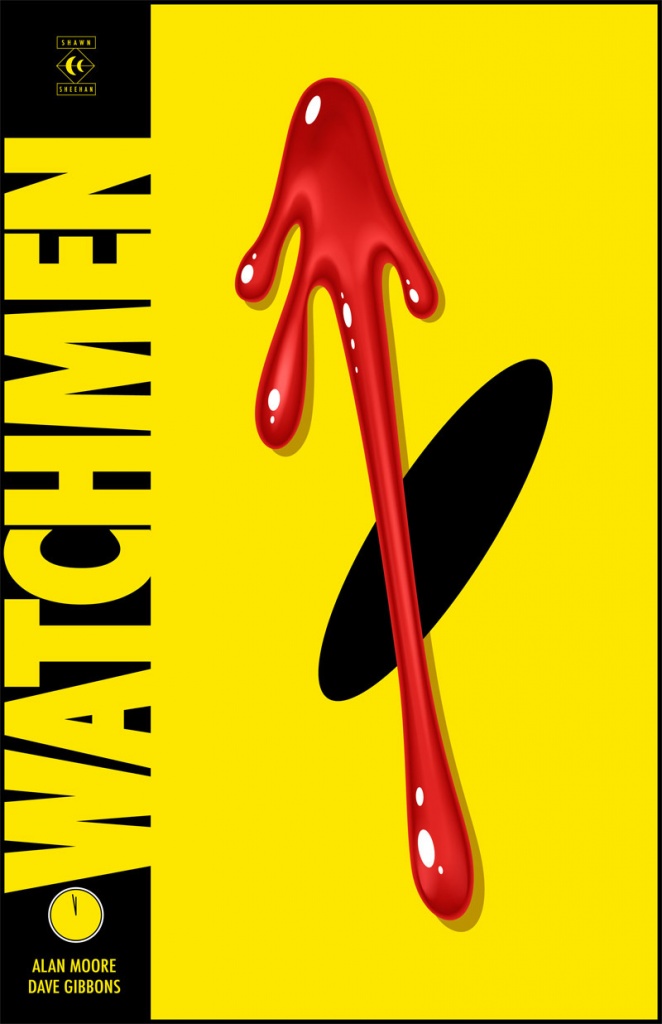
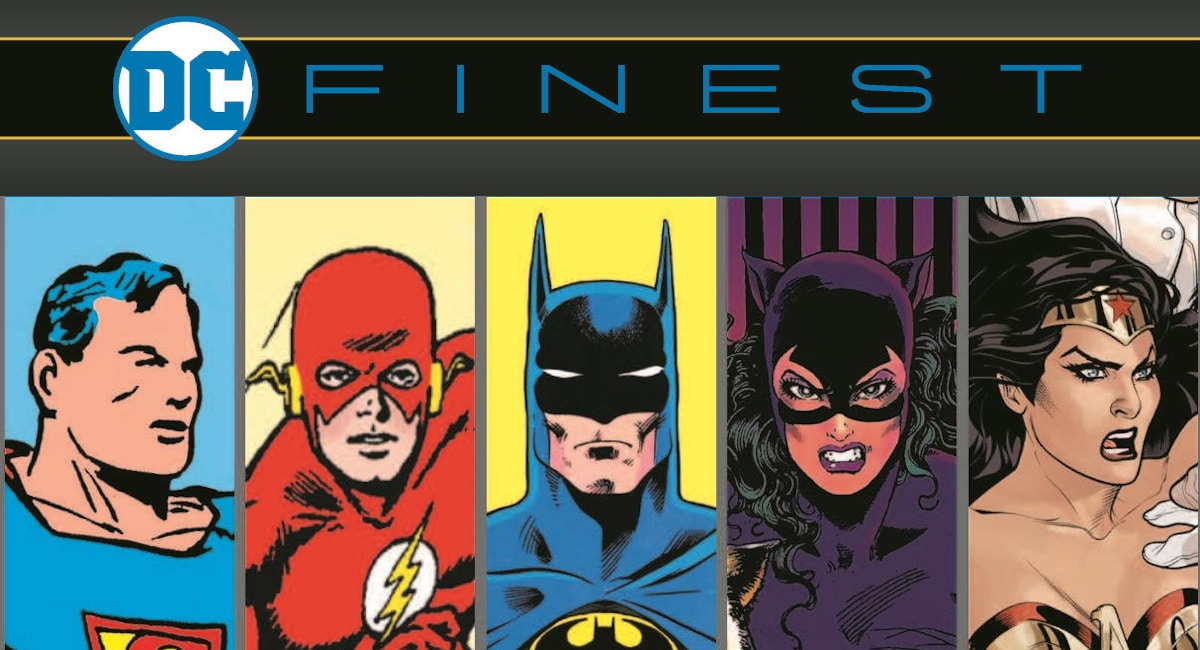
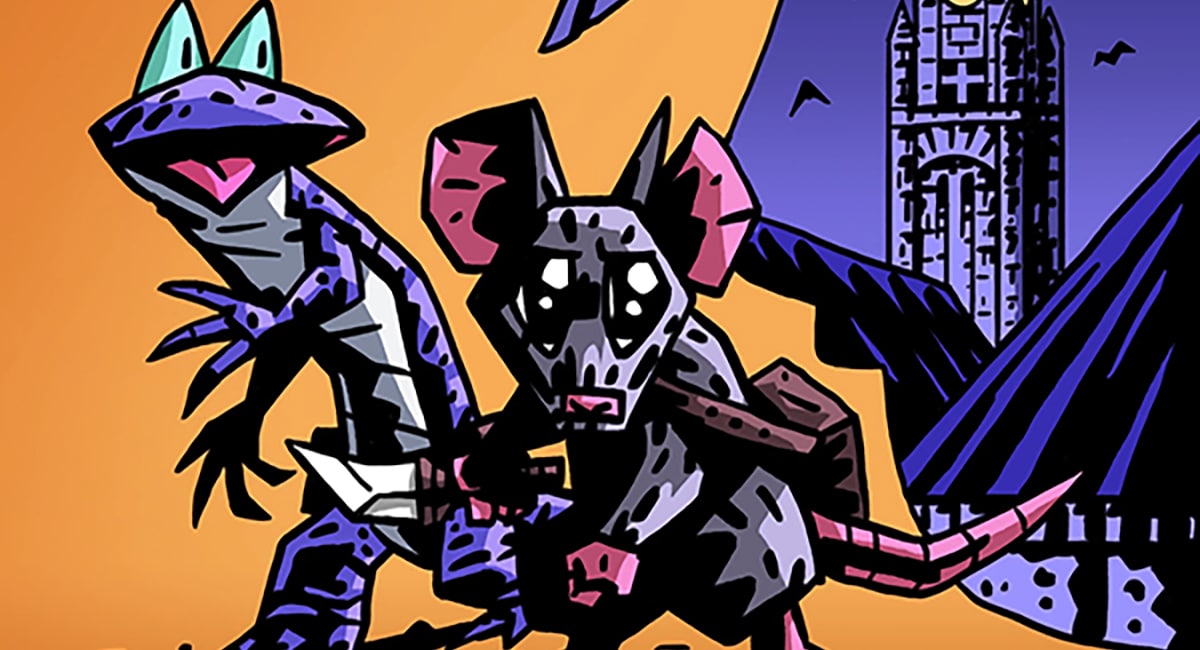
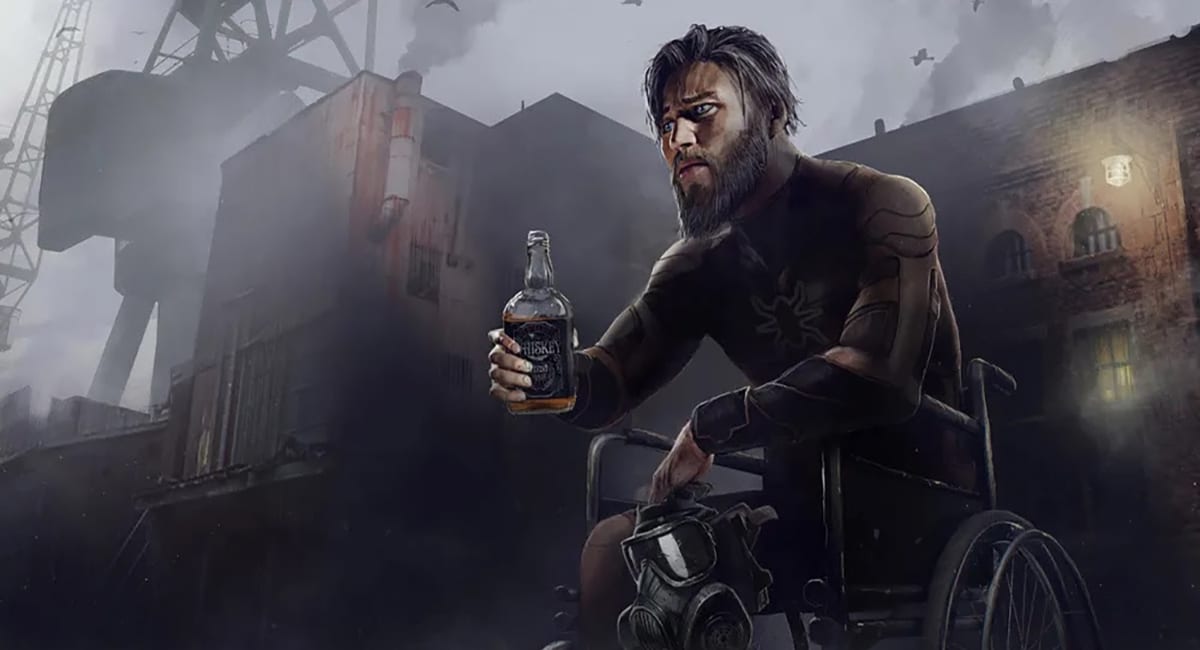


Great piece! Salient points, particularly about release cycles and crossovers. I’ve always thought crossovers are ultimately more detrimental to the format than anything else the Big Two does. I get WHY they do them– they sell. However, in the long term crossovers are generally just bumps you have to grind through when they bleed into random characters’ runs. It’s like having ten minutes of Transformers spliced into your Harry Potter book.
I do wonder about sagas though. When it comes to series, I prefer big long meaty adventures to self-contained stories. Volume ones are important because they establish a tone for the series. After six issues, you’ll generally have a sense of whether or not you want to keep following these characters stories’, at which point it really doesn’t matter whether the stories are self-contained or not. You love the characters and that’s what matters, which means that a good plot that spans multiple volumes is a delicious gravy on top of the characters which are the mashed potatoes– and who doesn’t like gravy on their mashed potatoes?
I suppose the argument falters when you consider books like Sandman, which was a little lackluster until issue 7 in WSQ, but series like that tend to be older. People understand the importance of the first volume now and rightfully give it the full attention it deserves. If they don’t, it’s time to start!
I’d settle for a consistent numbering system.
First problem: superhero comics, thanks to the Levitz Paradigm, are soap operas.
It’s a neverending story.
Like television soap operas, readers rarely read the previous issues/episodes/volumes.
There’s little incentive to keep volumes in print, UNLESS it’s one creator with a good backlist (Morrison’s JLA) or a saga within a series (Snyder’s Batman, Bendis’ Ultimate Spider-Man).
The best thing about superhero comics, IF they follow Shooter’s Imperative, is that it’s easy for a first-time reader to dive into a story with each issue/chapter. Yes, it gets clunky, but just like Dick Tracy, you can edit out the recap panels/pages in the collection.
Sagas… do sell. It’s not hard to dive into the older volumes. Costly? Maybe.
I had a lot of kid customers who discovered the Scholastic Bone volumes in color, and not willing to wait for the next volume to be printed, bought the paperback omnibus.
No omnibus? Buy the single volumes. (Yes, this happens. Ultimate Spider-Man, almost every popular manga series, even Sandman back in the day.) Can’t afford it? Visit the library.
Does a change in artist affect the story?
I don’t think so. The entire Death and Return of Superman epic proves this. Remember, in the 1990s, all five Superman titles were interlinked, denoted by a triangle on the cover telling you which weekly chapter it was.
Sandman is the standard in how to take a monthly series with a variety of storytelling formats, and collect them into volumes.
It’s got story arcs, containing lots of weird stuff. (Thankfully, each arc starts from scratch, with Morpheus appearing later.) There are single issues. There are arcs which reference previous stories and characters.
DC/Vertigo packaged them perfectly.
What’s the difference between picking up the previous seven volumes (work) and picking up an omnibus containing the same seven volumes (enjoyment)?
As for publishing schedules, DC is pretty quick about collecting titles.
They have already announced the Rebirth omnibus for next Fall, as well as some series which are just starting.
Martian Manhunter #6 = November 2015, GN (#1-6) = March 2016
A better model for DC:
Schedule a new series.
Give it six issues.
Judge sales, critical response.
If it sells, continue with another six issues.
If it doesn’t sell, end the series, and sell the trade.
If the trade sells well, then restart the series.
There’s a HUGE market outside comics shops. Bookstores, schools, librariies… they cater to readers who don’t care or even realize that there was a monthly series. They just want to read a good story.
Sure, maybe you gain some fans who can’t wait for the collection, so they become comics readers. (See: Walking Dead) But generally, they’ll wait for the next volume and read something else in the meantime. (See: Harlequin’s numbered series, each aimed at a specific demographic like ranchers, NASCAR, and single mothers.)
I see a shift to digital monthlies. Easy to read, cheaper to produce and distribute.
A lot of nice arguments.
I wouldn’t agree on sagas, though. It looks like if a saga is already at volume 8, it would be frightning for new readers. Well the point of TPBs is that it’s supposed to last and be there whether you want to read the book 1, 6 or 12 months later. So retailers should point to volume 1 and hope that the hook catches. And if (s)he likes the title, this new reader knows that there’s a lot more going on. :)
I would add that there’s something I like a lot when I read a TPB or Omnibus, it’s the opening page. Marvel has done quite nicely some times and then stopped from writing a text one or two pages long that sums up nicely where things are. I really prefer that to a foreword by someone else than the actual book’s writer. There should be more of that, especially in the ever-changing-world of Marvel / DC super-heroes.
Quick thought from paragraph one: while DOLLARS for GNs are certainly higher than periodicals, I largely doubt that it is true if we’re talking about number of readers.
JJ Miller’s Comics Chronicles says Diamond was ~98 million pieces of comics sold in 2015. 2015 BookScan (for everything, every down in the long tail) was about 15.3m copies.
I know that I can almost always sell far far far more copies of a periodical than I will of a book of the same material. To make a super-reductive argument, we sold about 30 copies of BLACK PANTHER #1 *yesterday*, whereas our best selling GN in the last month (PATIENCE) hasn’t sold that many copies in an entire month.
Frankly, I think the real argument is to serialize MORE. Can you *imagine* what a periodical comic that serialized, say, the next five GNs from Scholastic (with a Raina story in the lead) might be able to sell?
-B
Here’s my crazy idea. Bear with me.
So let’s assume that the goal is to sell more/better graphic novels. That that is the end product. So the writer has a 100page book in mind, and that’s what they are going to create.
The problem: the publisher can’t afford to pay him for 100 pages while not getting any revenue along the way.
The weird solution: Release the book in 20-page increments along the way.
But, you ask, how is this different from what they do now? The answer is that no real serious attempt is made to give a complete story in those 20 pages. Heck, page 20 could be the middle of a conversation. Other than making sure a 2-page spread isn’t interrupted, the writer/artist just do their 100 page book.
The idea is that no, each bit isn’t necessarily a complete story or chapter to itself with a satisfying resolution or whatever, but it IS something you can buy along the way to get the story faster, if you don’t want to wait for the final 100 pages.
Might be crazy, but it seems like it might work.
“The guilt trip that trade-waiters get books cancelled no longer flies. It’s a valid format or you wouldn’t be seeing original graphic novels coming out from the Big Two.”
Trades and Graphic Novels are not the same thing. Trades do not exist without monthly comics.
THEY.
DO.
NOT.
EXIST.
Focusing on changes to monthly comics, which certainly need a bunch, to benefit trades is like focusing on changes to the way new clothes are made in order to benefit the people who shop at Goodwill.
This is not semantics. Original Graphic Novels usually cost more for less content and sell worse than trades. I believe only two of the Top 50 “GN” sellers in February were actual graphic novels and one of those was a new edition of “The Killing Joke,” which originally came out in 1988 for pete’s sake!
This is important because most of the changes you could make to improve monthly comics as monthly comics would actually hurt them as trades, and most of the changes you could make to monthly comics to improve trades would actually further harm monthly comics. What could or show happen with Original Graphic Novels really has nothing to do with either.
Mike
“should happen” instead of “show happen.” Damn you lack of edit function!
“There are too many comics where you don’t get much actual _story_ in a single issue and it can be even worse with first issues.”
But this is already, at least in many ways, a reaction to TPBs, i.e. Writing for Trades. So it becomes a bit of a circular argument, totally tautological. This in part stems from the success of Graphic Novels in the 80s, but more importantly it’s an effect of a willful conflation of comic books with GNs. That is to say that the industry embraced the term to try to elevate the product, culturally, to climb out of the ghetto that was created in the move from ephemerality ( the newsstand, the Sunday paper) to the direct market ( namely the founding of LCBS to respond to the niche market that has been cultivated by decades of tradition and the emergence of an underground of publishers and readers.)
The danger here is in not recognizing, I would argue, the inherently serial nature of the medium. Often for practical reasons, as an artist can only produce so many pages. Some series operated serially for decades with no continuity (e.g. Archie) while others function as a saga (as is argued here). Most comic books, especially superhero books, are closer to soap operas, as there’s no telos, no guiding goal or end. And that’s fine, life is generally like this as well. Series with an end in mind (Y, Chew, Scalped, the Unwritten, etc) are hard to separate from a comics market that knows they’re already planned to be released in a trade, collected as a finished set. So if we want to talk about comics as a medium, it seems to me we at least have to think seriously about what it means to read serially, and so “seriality” is the main concept missing from this discussion.
“Like television soap operas, readers rarely read the previous issues/episodes/volumes.”
Really? When I was a superhero addict (a time that is admittedly 20 years in the past), catching up on episodes I’d missed — through back issues or reprints — was one of the genre’s big appeals. It was that way for all the superhero fans I knew. Maybe that doesn’t exist among today’s readers. Maybe they only care about the here and now.
@George – yeah, I would say we are actually now living in a world where people expect to be able to go back and start at the beginning, like with Netflix/DVD for TV series.
I’m sure Doctor Who fans aren’t all clamoring for the 1960’s stuff, but that 00’s “relaunch” probably gets watched pretty heavily.
There is no reason to buy Marvel/DC monthlies anymore. Overpriced ad-laden garbage.
This article needs to arrange a cage match with Hibbs’ “Original Graphic Novels Are a Shitty Business Model” and see which makes it out alive.
Is this what they talk about when they talk about first world problems? Honestly, I have cut back on the magazines. They were costing me up to $100, and I”m cutting it in half. There are good things out there like Marvel unlimited which is $10/month. DC should do one, I’d pay for it.
My strategy now is buy the main books I love, writers, and grabbing a TPB of a book I”m interested in, and having friends who we share our readings with. Other than that, this price is getting too much, and I have to be very selective. Back in the day, I used to try something just because it seems interesting — not anymore.
My public library provides most of the comics I read now, in the form of trades and graphic novels. And reprints of classics — I just polished off a book of Simon-Kirby Sandman stories from the ’40s.
t said: “Back in the day, I used to try something just because it seems interesting — not anymore.”
You’re making me nostalgic for the ’80s! I used to do that, too, but it eventually became too expensive. Comics have priced themselves out of being expendable, throwaway literature. Paying $4 or $5 for a pamphlet is a commitment, not a whim or impulse purchase.
Comments are closed.